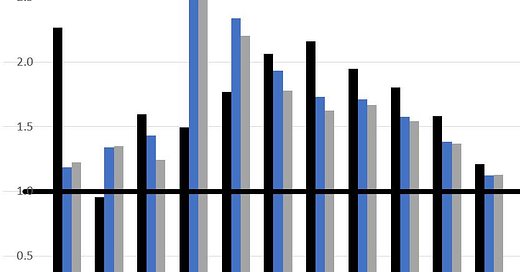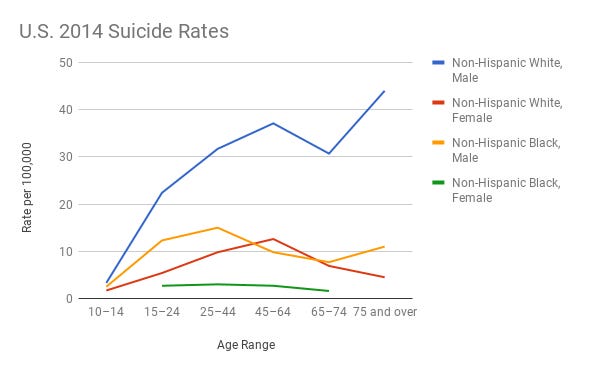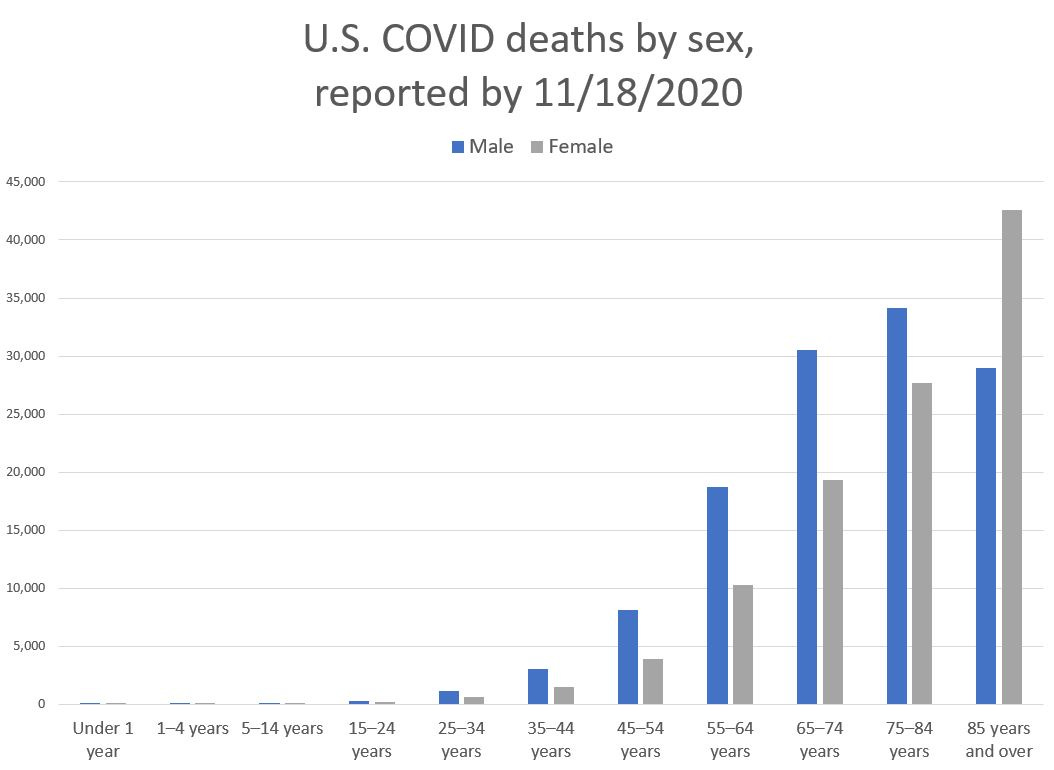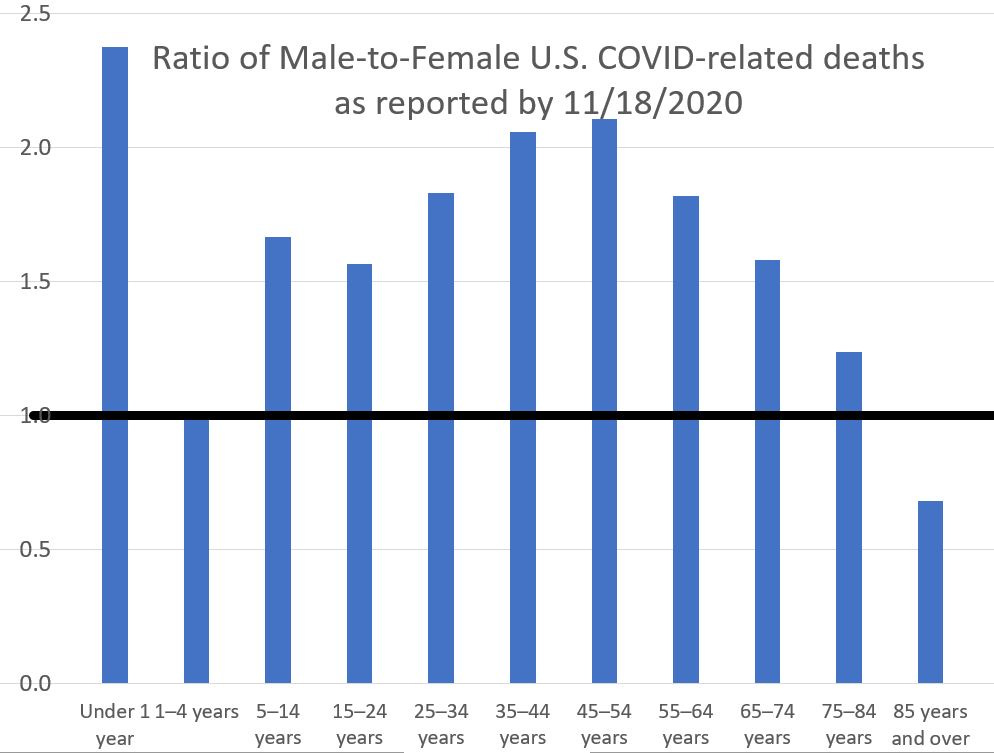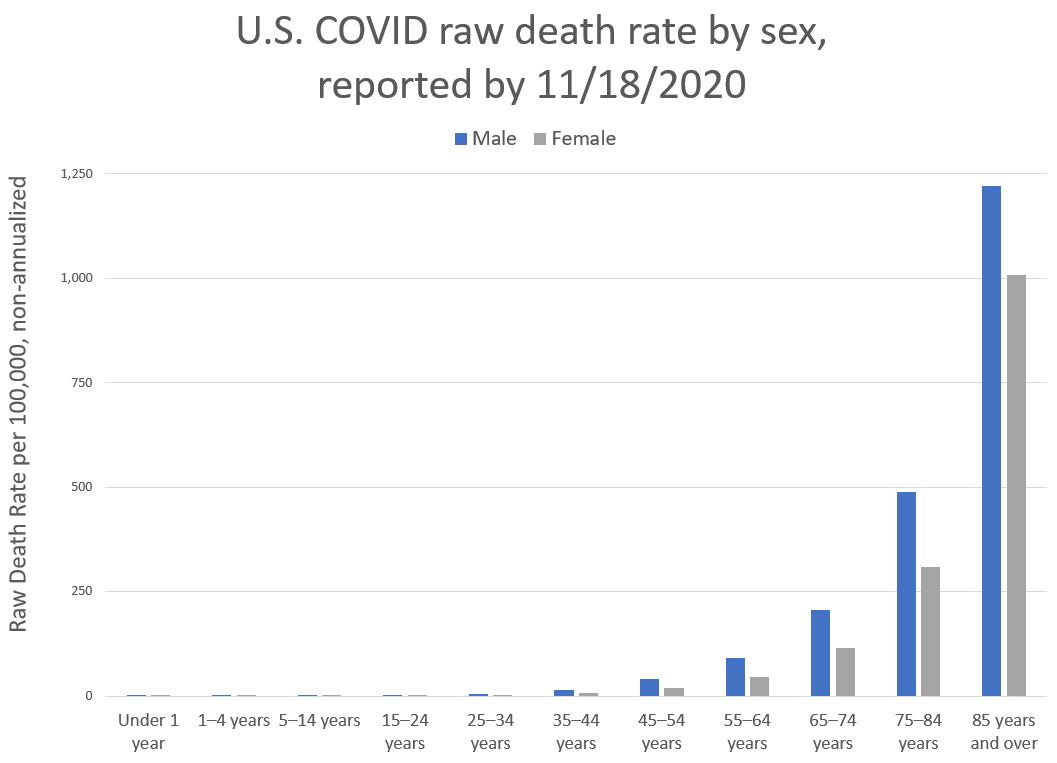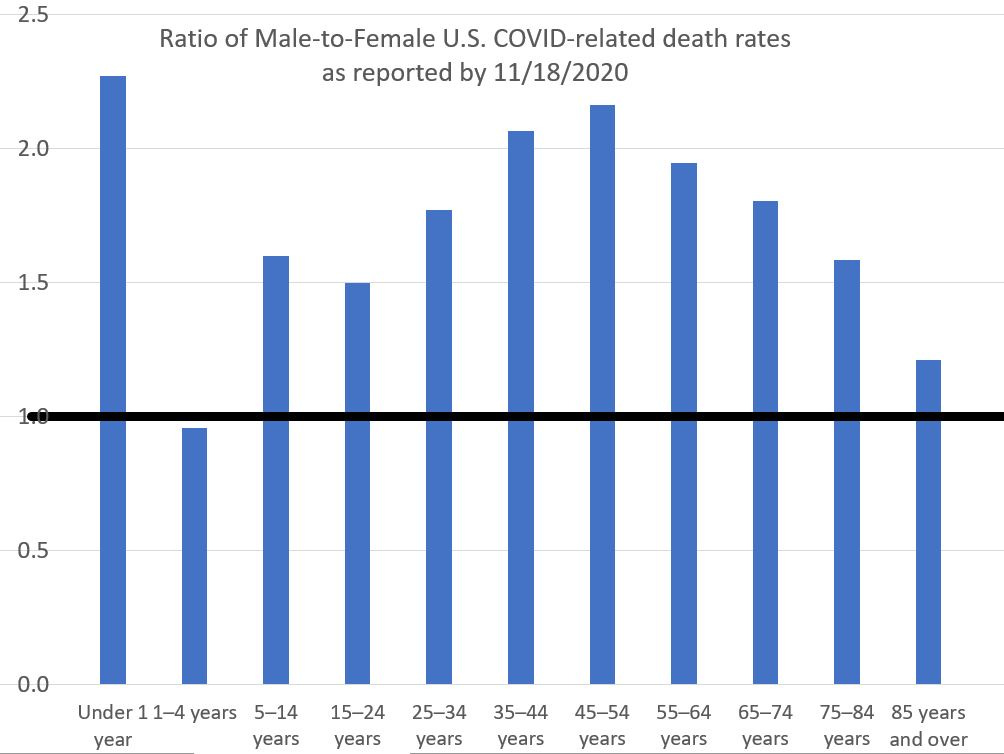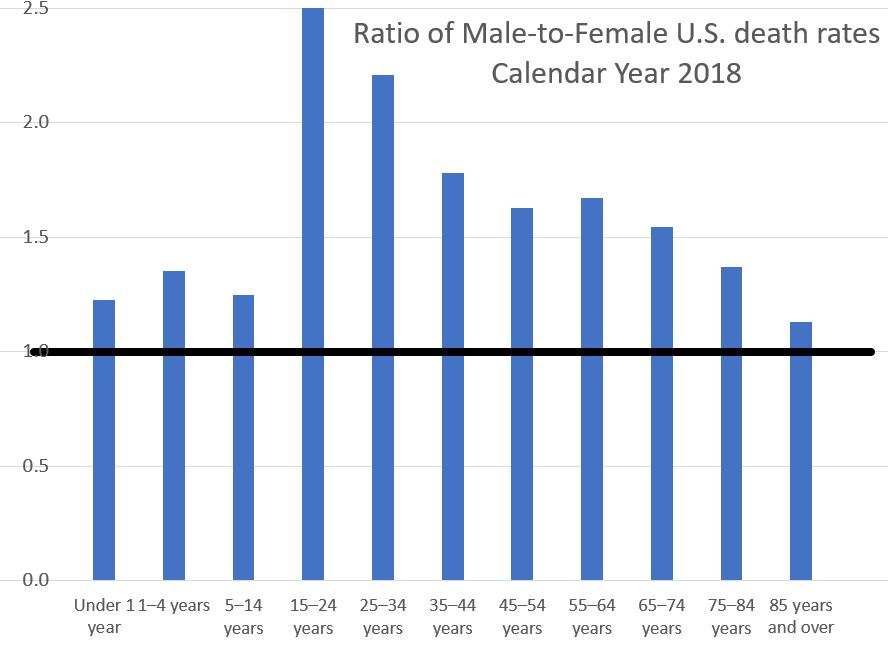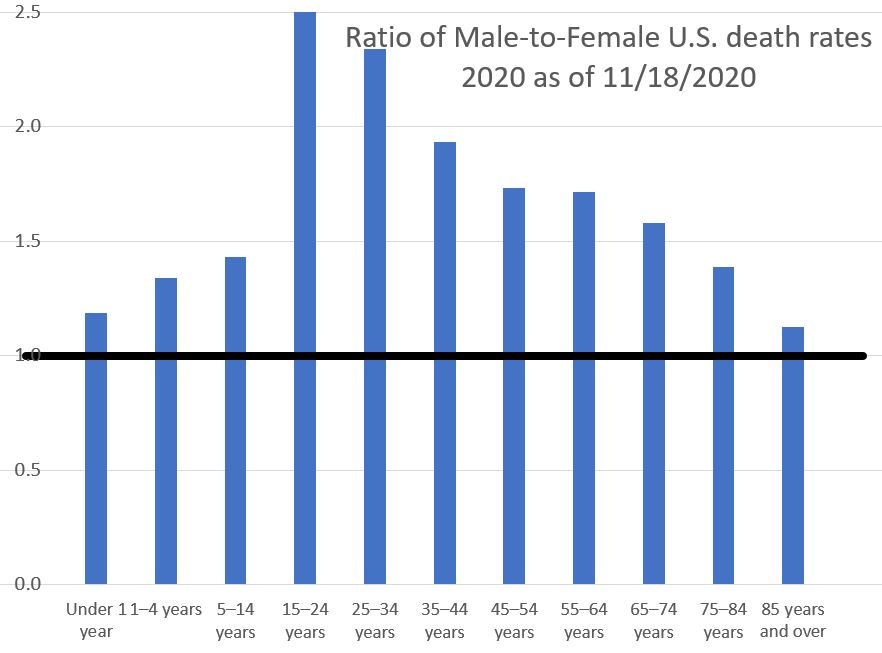Mortality with Meep: The Sex Gap in COVID and Total Mortality
Has COVID-19 made the sex gap in mortality worse?
I have written about the sex gap in normal mortality before, with June 2017’s Mortality Monday: The Sex Gap in Death, which I wrote a couple of months before Stu was diagnosed with advanced prostate cancer.
So before I get into the differences in mortality in the U.S. between the sexes, I want to plug my fundraiser for the Movember Foundation, which focuses on men’s health, and in particular three causes of mortality for men: prostate cancer, testicular cancer, and suicide.
Donate to help me raise much-needed funds for #menshealth this #Movember – for all the dads, brothers, sons and mates in our lives. Stop men dying too young. https://t.co/vDzLDbKcTg Just made it to my halfway point for my target this year!
— Mary Pat Campbell (@meepbobeep) November 12, 2020
I have written about Stu’s metastatic prostate cancer before, and indeed, only 10-ish years ago the five-year survival rate for that diagnosis was about 2%. (When I saw the research paper on that, I decided to stop reading historical survival rates for a while.) It’s over three years in, and our hope is that his cancer, while incurable, will become manageable as a chronic condition as so many other mortal conditions have before and that something else will kill him… eventually.
While I have had less direct involvement with suicide prevention, it is a much larger problem for men than women (no, it’s not a competition), and it’s especially bad for the oldest men.
The Movember Foundation has really stepped up in focusing on men’s mental health and suicide prevention — the fundraising I do supports all three major prongs of the charity.
While I’m focusing on U.S. mortality below, the Movember Foundation is an international organization. It was originally started in Australia in 2003, and has spread across the world. Please donate.
The U.S. COVID mortality sex gap in absolute numbers
First, I’m going to use the official COVID deaths statistics, broken out by age and sex. This was last updated on November 18, 2020, as this is a data set updated weekly, on Wednesdays.
Let’s first look at straight numbers, and this is based on COVID-involved deaths, as officially counted so far.
One thing to note is that for all the age groups, except for the highest group, there are more male COVID deaths than female.
If we do a male-to-female ratio by age, we get this:
I made a very black line at 1.0 so that you can clearly see that far more men are dying from COVID than women… except for those over age 85.
The reason fewer men die than women over age 85 is because there are far fewer men than women at that age range. We will see that in the next section.
The U.S. COVID mortality sex gap in rates
The numbers above are not fair comparisons, because the population of males and females are not the same at all ages. There are more boys born than girls at birth (and that’s a natural sex ratio that exists even absent sex-selective abortion/infanticide), and there are far fewer men than women at advanced ages. As we will see below, male death rates are higher than female death rates at every age for all causes.
But let us just focus on COVID mortality for right now.
Here are the raw death rates from COVID by age and sex grouping (so far):
Now we can see that the COVID death rates are higher for men at all ages.
I’m going to take a ratio of male-to-female raw COVID death rates (yes, a ratio of rates… can she do that? (YES I CAN))
Again, I emphasized the line at 1, so you can see that at every age group, except age 1-4 years old, males are dying at higher rates than females.
Just FYI, as of this data pull, 8 boys and 8 girls age 1-4 years died from COVID. So the rates are super-low and easily explained by the difficulty in doing rates with such low numbers. The official deaths for those under age 15 are extremely low in count, and I highly doubt they’re undercounting here.
Here is the extremely important thing to see: male mortality from COVID is more than twice that of females from age 35 to 54, and still close to twice for age 55 to 64. Men are getting disproportionately hit by COVID.
The total mortality sex gap in 2018
Perhaps you’re thinking maybe male mortality is that high compared to females in normal times.
Here are the 2018 mortality ratios:
That’s a very different pattern than what we saw with COVID mortality…. but that’s not the only way we could look at this.
Above, in the 2020 mortality comparisons I did, I looked only at the official “COVID-involved” deaths. As I noted in my prior mortality post, for younger adults, COVID barely explained the extra mortality we’re seeing in 2020.
The total mortality sex gap in 2020
So let us do a ratio of 2020 raw death rates, for deaths from all causes.
I used the same vertical scale in all these sex death rate ratio graphs (you say that 5x fast) so you can eyeball them. But let me put them all in one graph so you can directly compare.
Yes, the COVID death pattern is different, but if we look at the total death sex gap, it’s pretty close to the same for both 2018 and 2020. Dead is dead, no matter the cause.
Can we narrow the sex gap in mortality?
Here is the bottom line: males have much higher death rates than females, and COVID hasn’t changed that. The overall shape of mortality with respect to sex is the same as it was before.
When people asked me whether COVID kills a lot more men than women on a rate basis, the answer is yes.
But if we look at all the Americans who died in 2020, it looks like the sex ratio for mortality is about the same as it has been in recent years. It is a little worse, but it doesn’t add much compared to the sex gap in mortality that existed before.
While the Movember Foundation (please donate!) focuses on two causes of death that only affect males (prostate and testicular cancer) and one that vastly disproportionately affects males (suicide), almost everything kills males at a much higher rate than females.
Certain causes of death, such as homicide, suicide, and accidental causes of death, can be tied directly to certain patterns of behavior far more common among men than women. That is the main reason for the huge mortality sex gap for teens and young adults.
But in middle age? Old age?
For many areas of endeavor, sex gaps that are much smaller are seen as a call to action. Can we call for much lower mortality in males?
It seems to me that trying to narrow the sex gap in mortality by improving male mortality patterns is a good goal (as opposed to narrowing the gap by making female mortality worse.)
So something to think about. This particular item isn’t really about COVID at all.
Please donate to the Movember Foundation to improve men’s health.

